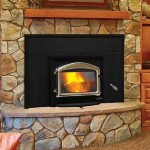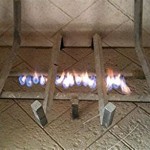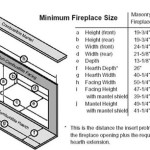Fireplaces By Design: Understanding and Preventing Mold Growth
Fireplaces, serving as focal points in homes and offering warmth and ambiance, can unfortunately also become susceptible to mold growth. When considering "Fireplaces By Design," it's crucial to incorporate preventative measures against mold from the initial planning stages. Ignoring this aspect can lead to costly remediation and potential health issues for occupants. This article will outline the common causes of mold in fireplaces, explore design considerations to mitigate the risk, and discuss practical steps for preventing and identifying mold formation.
The environment within and around a fireplace is conducive to mold growth for several reasons. Mold thrives in damp, dark, and poorly ventilated areas. Fireplaces, particularly those that are infrequently used or improperly maintained, can provide these conditions. Moisture intrusion is often the primary culprit, stemming from various sources, including condensation, leaks in the chimney, or water penetration through porous masonry. Soot, creosote, and other combustion byproducts can also trap moisture and provide a food source for mold, exacerbating the problem. Furthermore, the fluctuating temperatures associated with fireplace use create an environment where moisture can condense on cooler surfaces, further fueling mold growth.
Causes of Mold in Fireplaces
Several factors contribute to mold growth within fireplaces. Understanding these contributing factors is crucial for preventing and addressing mold issues effectively.
Moisture Intrusion: Water can enter a fireplace through several avenues. A damaged chimney cap allows rainwater to directly enter the flue. Cracks in the chimney masonry or flashing around the chimney's base provide pathways for water to seep into the surrounding structure. Leaks in the roof can also channel water down the chimney chase and into the fireplace area. Even seemingly minor leaks can provide enough moisture over time to foster mold growth.
Condensation: Temperature differences between the warm interior of the house and the cooler chimney can lead to condensation, particularly during periods of high humidity. This condensation can accumulate on the interior surfaces of the chimney and fireplace, creating a damp environment that supports mold growth. Infrequent fireplace use exacerbates this issue, as the lack of regular heat prevents thorough drying.
Combustion Byproducts: Soot and creosote, byproducts of burning wood, are hygroscopic, meaning they attract and retain moisture from the air. These deposits can act as a breeding ground for mold, providing both a source of food and a damp environment. Incomplete combustion, often resulting from burning unseasoned wood, leads to a greater accumulation of these byproducts, increasing the risk of mold growth. Regular cleaning and proper ventilation are essential to minimize this risk.
Design Considerations for Mold Prevention
"Fireplaces By Design" should prioritize features that minimize the risk of mold growth. Thoughtful design choices during the planning and construction phases can significantly reduce the potential for moisture intrusion and create an environment less conducive to mold.
Chimney Cap and Flashing: Ensuring a properly installed and maintained chimney cap is paramount. The cap prevents rainwater, snow, and debris from entering the flue. Flashing around the base of the chimney should be properly sealed to prevent water from seeping between the chimney and the roof. Regular inspections and repairs of these components are essential for maintaining a watertight barrier.
Proper Ventilation: Adequate ventilation is crucial for preventing moisture buildup. Vents in the chimney chase allow air to circulate and prevent condensation. Consider incorporating a top-sealing damper to minimize air leakage and prevent drafts when the fireplace is not in use. This also helps to control humidity levels within the chimney.
Material Selection: The materials used in the fireplace and chimney construction play a significant role in mold prevention. Consider using moisture-resistant materials for the chimney liner and surrounding masonry. Concrete block, for example, is less porous than brick and can reduce water absorption. Applying a water-repellent sealant to the exterior of the chimney can further protect it from moisture penetration.
Preventing and Identifying Mold Growth
Even with careful design considerations, regular maintenance and inspection are essential for preventing mold growth and addressing it promptly if it occurs.
Regular Cleaning: Schedule annual chimney sweeps to remove soot and creosote buildup. This reduces the food source for mold and improves ventilation. Clean the fireplace interior regularly, paying attention to areas that tend to accumulate soot and ash. Use a vacuum with a HEPA filter to prevent the spread of mold spores during cleaning.
Proper Firewood Storage: Store firewood in a dry, well-ventilated area away from the house. This prevents moisture from being introduced into the fireplace area. Ensure that the wood is properly seasoned (dried) before burning it. Burning unseasoned wood produces more smoke and creosote, increasing the risk of mold growth.
Regular Inspections: Conduct regular visual inspections of the fireplace and chimney for signs of moisture intrusion or mold growth. Look for water stains, discoloration, or a musty odor. Pay particular attention to areas around the chimney cap, flashing, and firebox. If you suspect mold growth, consider hiring a professional to conduct a mold inspection and remediation if necessary. Professional mold testing can determine the type and extent of the mold infestation, allowing for targeted treatment.
Addressing moisture problems promptly is crucial for preventing mold from taking hold. Repair any leaks in the roof, chimney, or flashing immediately. Ensure that the chimney cap is in good condition and properly sealed. If condensation is a recurring problem, consider installing a chimney liner to reduce temperature differences and minimize moisture buildup. By addressing these issues proactively, homeowners can minimize the risk of mold growth and maintain a healthy and safe home environment. Regularly checking the space and identifying potential risks of mold can help you to solve the problem quickly.

60 River Rock Stone Molds Make 1000s Fireplace Wall Veneer Free

Diy Faux Plaster Fireplace Surround Chelsey Freng

Wainscoting Fireplace Design Ideas Molding Home Remodel

12 River Rock Molds Oor 01 Make 1000s Cement Fireplace Wall Stones Fast Ship

Adding Visual Interest And Height To Your Fireplace Home Remodel Molding

Diy Faux Plaster Fireplace Surround Chelsey Freng

Diy Fireplace Makeover Part One Updating Mantel Moldings Remodelaholic

30 Living Area Styles With Fireplaces Fireplace Design Mantels Interior Paint
Fireplaces By Design Mold

Fireplace Dentil Molding Cottage Living Room Loi Thai Mantel Decor Moulding
Related Posts








